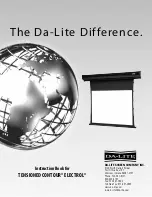
30
fastwaytrailer.com
Service Tech and Experienced Installer Check List
Step 1
Park the loaded tow vehicle and trailer on a level surface.
Step 2
Install the hitch ball. If already installed, check that the ball is in good condition and
is tight on the hitch head.
Step 3
Measure from the ground to the trailer coupler.
Secure the adjustable shank in the receiver with the hitch pin and clip.
Insert the spacer rivet with washers into the back of the hitch head to preload the
angle of the hitch head.
Slide the hitch head bolt channel around the shank and hold the hitch head so that
the top of the hitch ball measures between 0” - 1” higher than the coupler height.
Use a specialty shank if needed.
Insert the shank bolts, washers, and nuts to attach the head to the shank.
Tighten the angle set bolt.
Step 4
Determine which coupler style you have before installing the link plates.
Measure 30” from the coupler along the trailer frame. Install the link plates with
their centers between 27” and 30”, as far back as the frame will permit.
Pinch the link plates tight to the frame and tighten the bolts evenly.
Install the L-brackets.
Step 5
Take initial measurements at the front axle for weight distribution - uncoupled and
coupled with no weight distribution.
Lift the spring bars onto the L-brackets, retract the jack and engage the weight
distribution.
Step 6
Check for good weight distribution and make needed adjustments.
Step 7
Check the trailer pitch and make needed adjustments.
Step 8
Check that all bolts and nuts have been properly tightened and that all pins and clips
are securely in place.
Step 9
Give the owner’s manual to the customer.



































